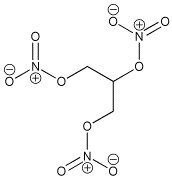This will be a small intro to pharmacology. My goal is that after I finish this small series I can know the material well enough to be able to explain it to a layperson, and you guys can get some basics on what happens after you ingest any drug. Please ask questions, I will be grilled in my exam by the brilliant (and kinda intimidating at this moment) group I chose to be my committee.
First of all, what is a drug? You can consider a drug any substance that binds to some tissue in your body and produces an effect. So yes, a *lot* of things we ingest can be considered drugs.
Today, I'll write mostly about pharmacokinetics, in other words about what the body does to a drug. What does it do?
A - Absorption - is the movement of the drug from the site of administration to blood circulation
D - Distribution - is the process of diffusing or transferring the drug from within the vascular system to the rest of the body tissue.
M - Metabolism - is the chemical conversion or transformation of the drug into compounds that are easier to eliminate
E - Excretion - is getting rid of the drug and/or its metabolites via renal, pulmonary, or biliary processes.
These processes all have one thing in common- they involve the drug passing through cell membranes. In order for us to understand what's going on, we have to know the characteristics of both the drug and the cell membrane.
Let's talk a little bit about the cell membrane.

Take a look at the right end of the cartoon. The
phospholipid bilayer is the main component of the membrane. Phospholipids are a type of organic molecule that have water-hating tails (that touch each other in the middle of the bilayer), and water-loving heads (in the outside of the bilayer).
Since the middle of the membrane is hydrophobic it likes oily, non-charged compounds mostly. Charged or highly polar molecules would have a hard time passing through that, since they tend to be soluble in water. This membranes are also very flexible and fluid, and have a high electrical resistance. There are several proteins embedded in that membrane that transport molecules from one side to the other, among a lot of other things.
So if we want a drug to cross this membrane we need to know a few characteristics that can help or hamper its crossing.
- Molecular size - Is it too big to pass through the membrane by passive diffusion across a concentration or electrochemical gradient?
- Molecular shape - Can it be "grabbed" by one of the many molecules that have transporter proteins in the membrane? Can it be recognized by one of the transporter proteins by itself?
- Degree of ionization- Depending on the pH of its environment some areas of the molecule can acquire or loose a hydrogen atom. The number of electrons in that end changes, and with that the polarity of the molecule.
- Relative lipid solubility - like dissolves like. The more polar a thing is the more likely it likes water soluble and not lipid soluble.
- Binding to tissue proteins - Here's where the tricky part starts. You'd like it to be able to bind to the specific receptors you want to have an effect on, but chances are it will also bind elsewhere.
Next, how are drugs distributed in the body, and more details about ADME.












